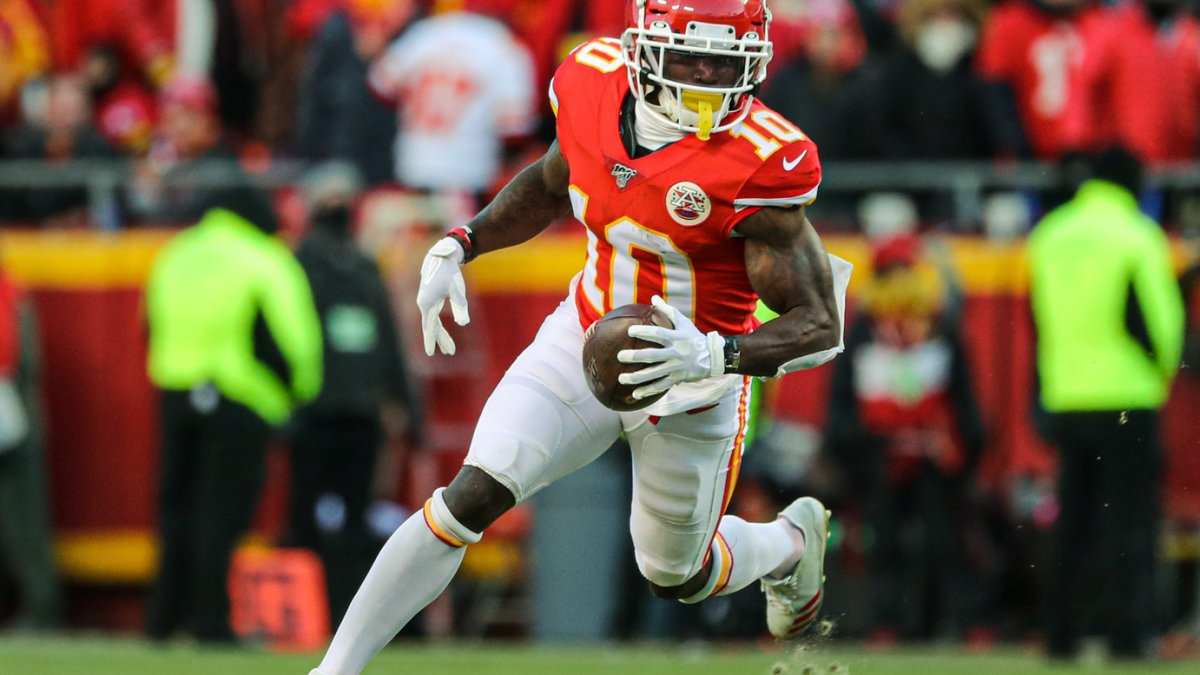Running backs don’t matter, or so the adage (or modern analytics cliché) goes, but what about hybrid players?
For quite some time now, PFF and the football analytics community as a whole have been presenting more and more evidence as to the replaceability of running backs and their relative lack of value compared to players who move the needle in the passing game. That analysis has extended even further than simply rushing attempts and into backs who feature in the passing game, but even backs who do feature as receivers are less valuable than their perception might suggest. So what about players who can line up in multiple positions and become matchup weapons?
[Editor’s note: Subscribe to PFF ELITE today to gain access to PFF’s Premium Stats and new Player Grades experience in addition to the 2020 NFL Draft Guide, 2020 Fantasy Rookie Scouting Report, PFF Greenline, all of PFF’s premium article content and more.]
Is there an inherent value that overcomes the relative lack of value in the running back position when it comes to being a hybrid weapon? Put another way: does a running back who can also play wide receiver become dramatically more valuable than one who can’t, and is there a better way to gain an edge on offense?
When we think of hybrid running backs, we tend to think of players whose receiving skills are good enough that they can be motioned out of the backfield and into the slot — or even out wide — and asked to run wide receiver patterns.
Isolating those players on run-stuffing linebackers and exploiting that mismatch for a big play is the goal, but the data suggests that it’s not necessarily the most efficient tactic overall. It can certainly manufacture specific matchup wins for an offense, but generally speaking, even players like Le’ Veon Bell or Christian McCaffrey — running backs who have skills enough to line up as a wideout and run legitimate wide receiver routes — are worse at it than full-time wideouts, so targets sent their way are less efficient.
This isn’t to say that they won’t end up with individually gaudy statistics if they’re fed enough targets, or even that they won’t have a lot of productive plays, but it suggests that those can come at the detriment of the offense’s overall efficiency and effectiveness compared to targets that could have gone to a full-time receiver instead. It’s an issue of opportunity cost.
Average yards per target when lined up as slot or WR
| Player’s designated position | Yards per target |
| Running back | 8.7 |
| Tight end | 11.2 |
| Wide receiver | 13.2 |
In the simplest terms, targets to running backs who are lined up as slot receivers or out wide average 2.5 fewer yards than those that go to tight ends in the same alignments and 4.5 yards less than those that go to wide receivers.
Obviously, down and distance and various other factors are important variables, but it’s a pretty clear and obvious divide in terms of how much yardage those plays typically generate. In terms of expected points added (EPA) and other data points that start to take into account the down and distance, it is much the same story.
Christian McCaffrey, who’s maybe the current prototype of a matchup problem in the passing game, averages just 7.4 yards per reception when he lines up as a receiver compared to 9.0 when he’s in the backfield. He averages an explosive play (a 15-plus yard reception) more often on targets from the backfield than he does when they split him out as a receiver, where you would expect them to be isolating him on a mismatch. What we assume to be a constant production line of mismatch plays based on his highlight reel is actually less efficient than his typical backfield deployment.
Since PFF has been grading (2006), only two backs have more than 1,000 receiving yards from wide receiver alignments: Reggie Bush (over 1,243) and Darren Sproles (1,100). No other back has more than 700 receiving yards when moonlighting as a wide receiver.
Moving a running back into the slot or out wide just doesn’t stress a defense the way we think it does — they still treat him as a running back and have worked out adjustments and rules within their coverages to account for that threat. The lumbering, two-down linebacker whom the move is designed to exploit has also largely died out in the NFL, so it is very much a trap that’s designed to capture an extinct animal.

Defenses have effectively caught up with this mode of attack and are now pretty good at neutralizing it.
But is the same thing true for players who move in the other direction? Can you cause different problems for a defense by moving a receiver into the backfield as opposed to a running back out to receiver? My theory for a while has been yes, and it’s a theory that has been backed up by some of the smart football people on the PFF staff who have experience in the NCAA and NFL. But frankly, who cares what we think? What do the data and the tape tell us?
Offenses have dabbled in this concept for years, but it has tended to be full-blown position switches, gimmick plays here and there or an effort to get the ball in the hands of playmakers absent of any real idea or plans for achieving that goal. It has occasionally been something else, however.
Exclusive content for premium subscribers

WANT TO KEEP READING?
Dominate Fantasy Football & Betting with AI-Powered Data & Tools Trusted By All 32 Teams
Already have a subscription? Log in



 © 2025 PFF - all rights reserved.
© 2025 PFF - all rights reserved.